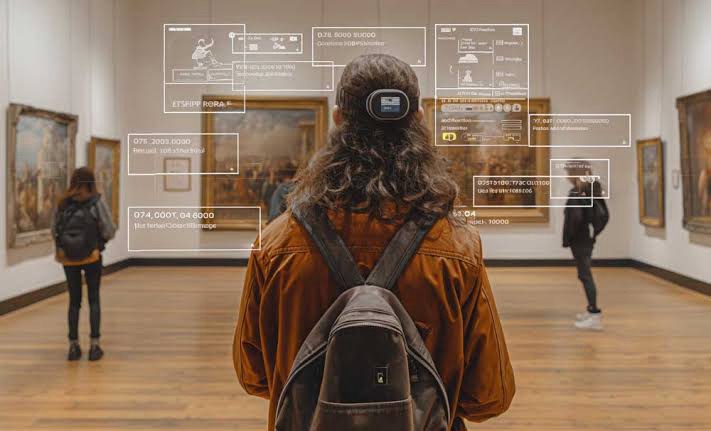BY: OTONO MOMODU
The rise of the internet and digital technologies has fundamentally reshaped how people access and interact with information. Search engines like Google provide instant access to vast amounts of knowledge from anywhere in the world, raising important questions about the role of museums, which have long served as custodians of history, culture, and education. As digitalization continues to transform various industries, Nigerian museums are also undergoing a significant evolution in how they document, preserve, and present their collections.
Before the digital era, Nigerian museums relied on traditional, labour-intensive methods for cataloging and preserving artifacts. Museum staff meticulously recorded artifact details—such as descriptions, provenance, and conservation notes—in paper-based ledgers. Card catalogs were commonly used, with each card dedicated to a single artifact. Photography played a crucial role in documentation, capturing images of artifacts, exhibitions, and restoration efforts. Film and video recordings were also used to preserve museum work visually.
Maintaining records was a demanding process. Museums kept paper-based files, including accession registers, conservation reports, and loan agreements, which required careful preservation. Some museums adopted microfilm and microfiche to store important records, reducing the risk of paper deterioration. Manual indexing systems allowed staff to locate specific information, while typewritten reports documented findings on exhibitions and artifact conservation. Hand-drawn illustrations supplemented these reports, providing visual references for items that might not be easily photographed.
Beyond written documentation, museums preserved cultural knowledge through oral traditions. Stories about artifacts and their historical or spiritual significance were passed down among staff and community members. However, these traditional documentation methods were not without flaws—they were time-consuming, prone to human error, and required substantial effort to maintain.
The shift to digitalization has transformed museum operations, significantly improving efficiency, accuracy, and accessibility. Digital records have replaced many paper-based methods, allowing museums to store, search, and retrieve information more easily. Online databases now contain detailed information about collections, making research and curation faster and more reliable.
Yet, as museums embrace digitalization, they face new challenges in remaining relevant in an era where information is readily available online. Previously, museums were primary sources for learning about art, history, and culture, requiring visitors to engage with physical collections. Today, people can access similar information with a quick internet search. To compete with this ease of access, museums must offer unique experiences that cannot be replicated digitally—such as immersive exhibitions, interactive storytelling, and behind-the-scenes insights into collections.
Engaging new audiences is another challenge. While traditional museum-goers may continue to visit physical locations, younger generations—who are digital natives—expect online interaction. Museums must embrace digital outreach, using social media, virtual exhibitions, and interactive online programs to attract and educate new audiences. By doing so, they can expand their influence beyond physical visitors and connect with a global audience.
Despite these challenges, digitalization offers exciting opportunities. Museums can now transcend geographical barriers, making their collections accessible worldwide. Online exhibitions and digital archives provide access to artifacts for researchers, educators, and the general public, regardless of location. Virtual reality (VR) and augmented reality (AR) technologies can enhance the visitor experience, offering interactive and immersive storytelling. Mobile apps can serve as digital tour guides, providing deeper engagement with exhibits through multimedia content. Social media platforms enable museums to foster dialogue, gather feedback, and build a global community around cultural heritage.
However, embracing digital technologies comes with risks. Online collections are vulnerable to cyber threats, digital decay, and long-term preservation challenges. Museums must invest in secure digital infrastructure, staff training, and data protection measures to ensure the longevity and integrity of their collections. Additionally, accessibility and digital equity remain important considerations. Not all audiences have the same level of access to technology, so museums must find ways to engage underserved communities—whether through free digital programs, partnerships with local organisations, or inclusive online initiatives.
The future of museums in the digital age depends on their ability to adapt. Institutions must be willing to experiment, innovate, and invest in the expertise required to manage digital transformation. By embracing technology while preserving the essence of their mission, museums can continue to be dynamic spaces for learning, cultural exchange, and historical preservation.
The era of Google poses both challenges and opportunities for museums. Those that successfully integrate digital tools while maintaining their core values will remain relevant and vibrant in an increasingly online world. By doing so, they will continue to serve as vital institutions that inspire curiosity, foster engagement, and preserve cultural heritage for future generations.
Otono Momodu, ANIPR, is on secondment as a lecturer in the Department of Mass Communication, Auchi Polytechnic, Auchi.


